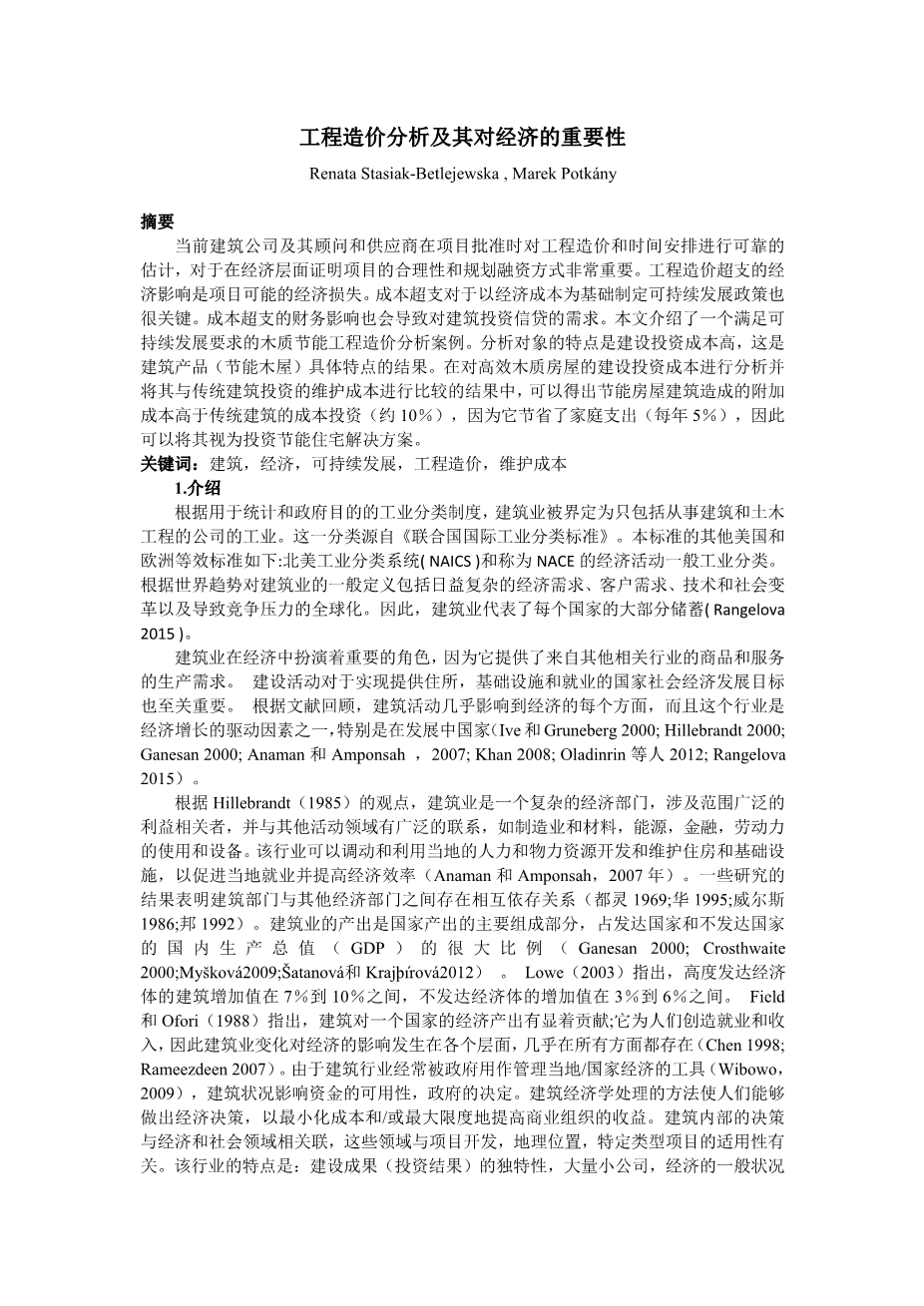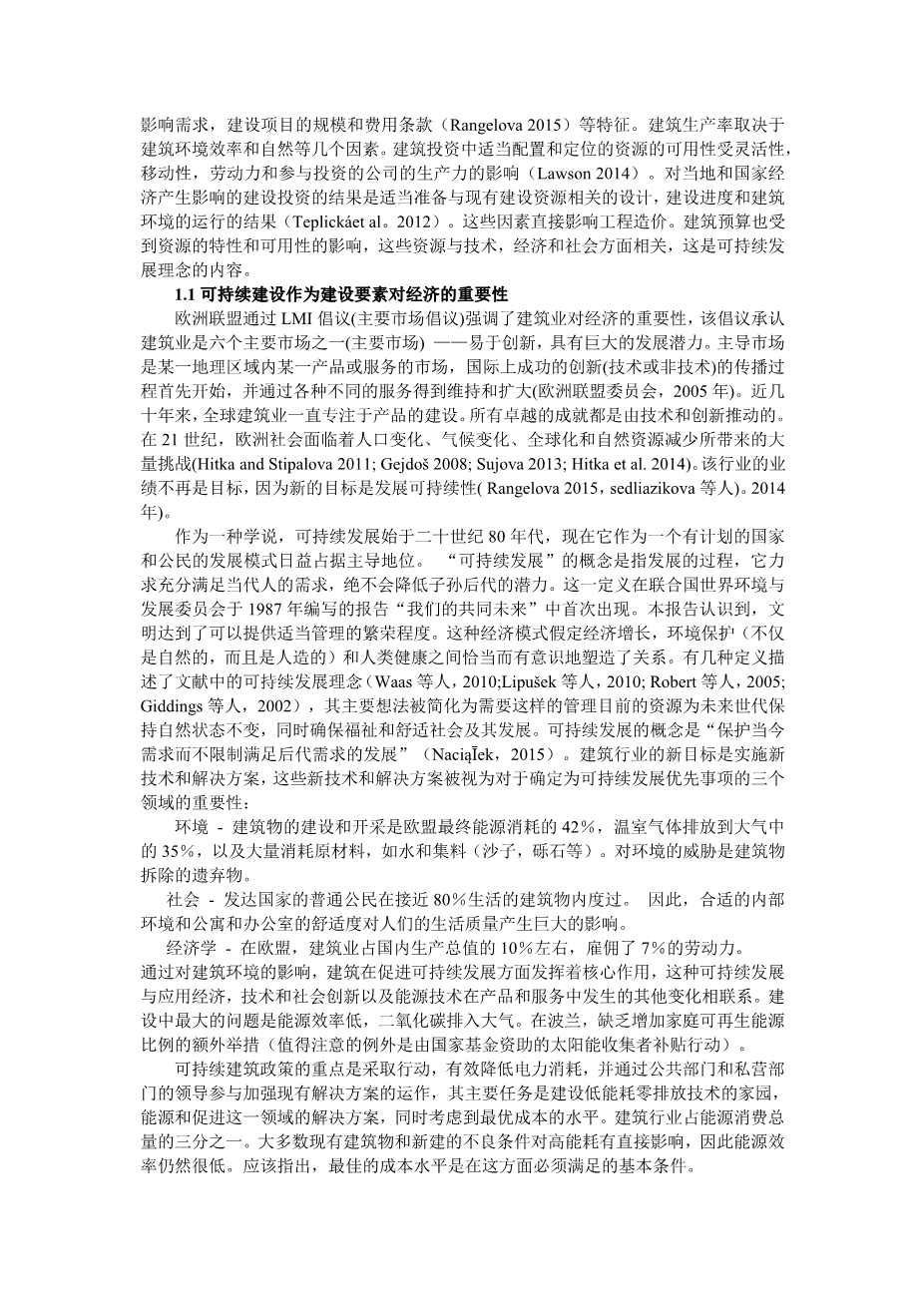Construction Costs Analysis And Its Importance To The Economy
Renata Stasiak-Betlejewska , Marek Potkaacute;ny
Abstract
Reliable estimates of construction costs and schedules presented by contemporary construction companies, their consultants and suppliers at the time of project approval are important for justifying a project on economic ground and for planning the means of financing it. The economic impact of a construction cost overrun is the possible loss of the economic justification for the project. A cost overrun can also be critical for creating policies within sustainable development on the basis of economic costs. The financial impact of a cost overrun results also in demand for construction investments credits. The paper presents a case of construction cost analysis for wooden energy efficient house that meets sustainable aspects. Analyzed object is characterized by high costs of the construction investment, that result from specific characteristics of the construction output (energy efficient wooden house). In the result of analysis of the construction investment costs for the efficient wooden house and its comparison with the costs of traditional construction investment on maintenance costs, it can be stated that additional cost resulting from the energy efficient house building is higher than costs of traditional construction investment (about 10%) and it can be treated as the investment in the energy efficient house solutions since it brings savings for home expenditures (5% annually).
Keywords: Construction, economy, sustainable development, construction costs, maintenance costs
1. Introduction
The construction industry, in accordance to system of industrial classification used for statistical and government purposes, is defined as industry that includes only companies that are involved with building and civil engineering. This categorization is derived from the United Nations International Standard of Industrial Classification (ISIC). Other American and European equivalents for this standard are following: the North American Industry Classification System (NAICS) and the General Industrial Classification of Economic Activities known as NACE. General definition of the construction industry based on world trends include needs of increasingly sophisticated economy, client demands, technological and social change, and globalization leading to competitive pressures. In the result the construction industry represents most of every nationrsquo;s savings (Rangelova 2015).
The construction industry plays an important role in the economy since it provides demand for the production of goods and services from other related industries. Activities of the construction are also vital to the achievement of national socio-economic development goals of providing shelter, infrastructure and employment. In accordance to literature review, the construction activities affect nearly every aspect of the economy and that the industry is one of the driven factor of the economy growth, especially in developing countries (Ive and Gruneberg 2000; Hillebrandt 2000; Ganesan 2000; Anaman and Amponsah, 2007; Khan 2008; Oladinrin et. al. 2012; Rangelova 2015).
In accordance to Hillebrandt (1985), the construction industry is a complex sector of the economy, which involves a broad range of stakeholders and has wide ranging linkages with other areas of activity such as manufacturing and the use of materials, energy, finance, labour and equipment. The industry can mobilize and utilize local human and material resources in the development and maintenance of housing and infrastructure to promote local employment and improve economic efficiency (Anaman and Amponsah, 2007). Results of some studies have shown that there is an interdependence between the construction sector and other economic sectors (Turin 1969; Hua 1995; Wells1986; Bon 1992). Output from the construction industry is a major and integral part of the national output, accounting for a sizeable proportion in the Gross Domestic Product (GDP) of both developed and underdeveloped countries (Ganesan 2000; Crosthwaite 2000; Myscaron;kovaacute; 2009; Scaron;atanovaacute; and Krajthorn;iacute;rovaacute; 2012). Lowe (2003) stated, that the value added of the construction is in the range of 7% to 10% for highly developed economies and around 3% to 6% for underdeveloped economies. Field and Ofori (1988) stated that the construction makes a noticeable contribution to the economic output of a country; it generates employment and incomes for the people and therefore the effects of changes in the construction industry on the economy occur at all levels and in virtually all aspects of life (Chen 1998; Rameezdeen 2007). The state of the construction affects the availability of capital, governmentrsquo;s decisions since the construction industry is frequently used as a tool by government to manage the local/national economy (Wibowo 2009). Construction economics deals with methods that enable one to make economic decisions towards minimizing costs and/or maximizing benefits to business organizations. Decisions within the construction are linked with economic and social fields that are associated with: project development, its location, suitability of a particular type of project. This industry is characterized by some features such as: unique character of the construction outcome (investment result), a large number of small companies, the general state of the economy influences demand, terms of construction projectsrsquo; scale and expenses (Rangelova 2015). The construction productivity depends on several factors such as the built environment efficiency and nature. The availability of the properly configured and located resources within construction investment is affected by flexibility, mobility, the workforce and the productivity of companies involved in the investment (Lawson 2014). The
全文共24035字,剩余内容已隐藏,支付完成后下载完整资料


英语原文共 6 页,剩余内容已隐藏,支付完成后下载完整资料
资料编号:[13104],资料为PDF文档或Word文档,PDF文档可免费转换为Word


